








MIDWEEK UPDATE 6 DECEMBER 2017Plan Your Weekend……..Forthcoming Events…….Aviation News Worldwide Incidents and Accidents……This Week in Aviation History  9: AFB Langebaan Weg and SAAF Silver Falcons 50th anniversary airshow. AFB Langebaanweg, Western Cape. Go to: www.langebaanwegairshow.co.za   9: AFB Langebaan Weg and SAAF Silver Falcons 50th anniversary airshow. AFB Langebaanweg, Western Cape. Go to: www.langebaanwegairshow.co.za 3rd Saturday of every month. Microland. Bring and braai. Fires and bykos provided. Fires start from 09h30. Contact person: Nick Swardt 082 441 8011 or Alan Hussey 072 82 2341 28: FACF Fly in. ST Francis Airpark. Reserve date of 29 December in case of bad weather. All welcome, food and beverages will be available. Contact Barry Culligan barry@otto.co.za   7: SAAF Museum AFB Zwartkop open practise day. Officer Commanding - Museum oc@saafmuseum.org.za 012 351 2290 20 to 21: Sport Aerobatics Gauteng Regionals. Vereeniging Contact Annie Boon E-mail: chunge@mweb.co.za. 3rd Saturday of every month. Microland. Bring and braai. Fires and bykos provided. Fires start from 09h30. Contact person: Nick Swardt 082 441 8011 or Alan Hussey 072 82 2341   8: EAA Chapter 322 meeting. Dicky Fritz Moth Hall Edenvale. Contact: editor@afskies.co.za 3rd Saturday of every month. Microland. Bring and braai. Fires and bykos provided. Fires start from 09h30. Contact person: Nick Swardt 082 441 8011 or Alan Hussey 072 82 2341 21 to25: Armed Forces Day Kimberley.   3: SAAF Museum AFB Zwartkop open practise day. Officer Commanding - Museum oc@saafmuseum.org.za 012 351 2290 8: EAA Chapter 322 meeting. Dicky Fritz Moth Hall Edenvale. Contact: editor@afskies.co.za 9 to 11:Aero Club of South Africa air week at Middleburg airfield. Contact Alan Evan-Hanes E-mail: alan@aeroclub.co.za 3rd Saturday of every month. Microland. Bring and braai. Fires and bykos provided. Fires start from 09h30. Contact person: Nick Swardt 082 441 8011 or Alan Hussey 072 82 2341  The Aviation Radio Show; get all your questions answered in one place. To listen to a recording of the live broadcast click on the link: www.debela.co.za/aviation-radio-show  DAVID PORTER'S RV7-THE OFFICIAL 10,000TH VAN'S RV AIRCRAFT TO TRANSITION FROM A COLLECTION OF PARTS AND TAKE TO THE SKIES Congratulations to David Porter, who recently reported the first flight of his RV-7 and became the official 10,000th Van's RV aircraft to transition from a collection of parts and take to the skies. We say "official" because there are certainly more than 10,000 flying, but we don't know about all of them. 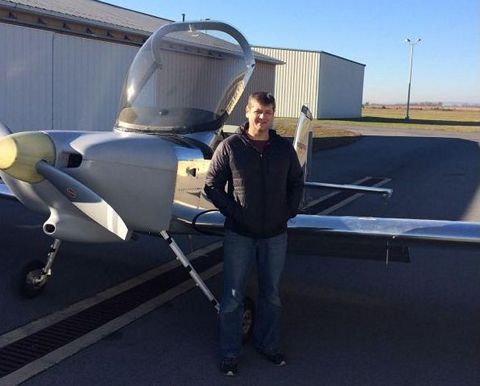 The increase from 9,000 flying RVs to 10,000 took just 33 months or under 1,000 days. So currently, about one new RV airplane leaves the ground each day, 360 in the last year. An interesting sidebar is that the shortest time taken to gain 1,000 flying RVs was from 6,000 to 7,000 in the 23 months leading up to October 2010. At that time, three new RVs flew every two days. Cirrus, the leader of the certified single piston pack, will deliver around 300 airplanes in 2017, so the "distributed production" of RVs is the largest addition to the worldwide piston fleet each year. Van's continues to democratize general aviation, to offer as many people as possible the opportunity to experience affordable RV "Total Performance". RV's have flown around the world, over both poles, and in more than 50 countries. 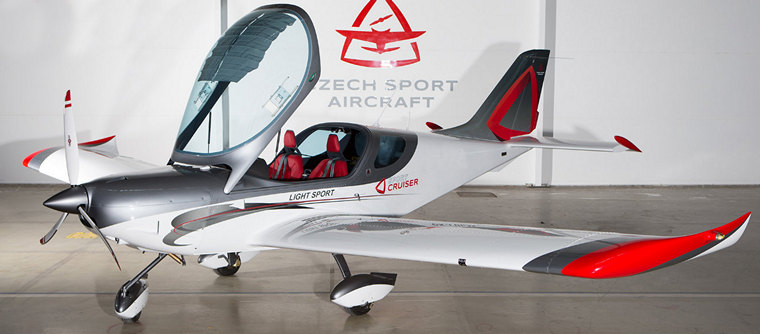 Photo © Czech Sport Aircraft The SportCruiser is certified in the USA LSA category and can be operated in countries recognising this LSA category, such as the USA, South Africa, Australia and some parts of South America. The PS-28 Cruiser is Type Certified for VFR Day operations according to EASA LSA regulations and can be fully commercially operated in EASA countries or in countries where the PS-28 Cruiser obtained local CAA Type Certification. Currently a total of almost 600 PS-28 Cruiser and SportCruiser have been produced. About 150 aircraft are operating in Europe and enjoying significant sales success. Due to its robust construction, ease of maintenance and superior flight characteristics, the PS-28 Cruiser and SportCruiser is the perfect platform for basic and advanced flight training, air clubs, basic military training, recreational use and air tourism. FIRST 10 DEPOSITS RECEIVED FOR "SUN FLYER 4" by Rebecca Berger 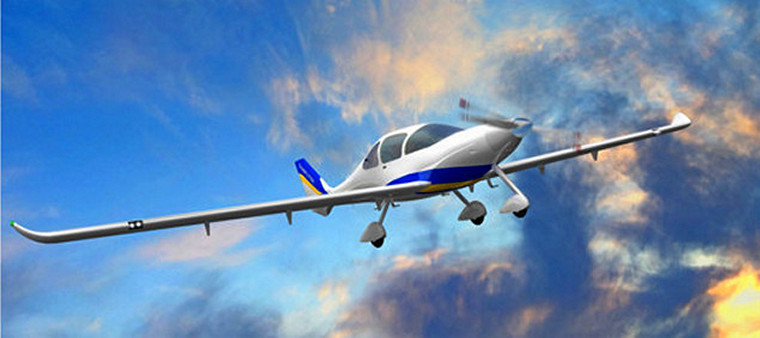 Photo © Sun Flyer The developer of the 4-seat "Sun Flyer" aircraft, called "Sun Flyer 4," announced that 10 deposits have been received for the airplane that was unveiled at EAA AirVenture Oshkosh 2017.  "Academy of Aviation," with training operations in Farmingdale, Long Island and White Plains, Westchester County Airport, New York, took the final delivery position for the Sun Flyer 4 in the "Oshkosh special" announcement. Chris Richards, President/Director said, "Academy of Aviation believes in innovation and embraces change to provide a superior product and experience. The Sun Flyer will advance this next-gen cost-effective capability to a whole new level - this changes everything." The 2-seat Sun Flyer, "Sun Flyer 2," will be the first FAA-certified all-electric trainer aircraft under FAR Part-23. The new 4-seat IFR-capable aircraft will closely follow the certification of the 2-seat version. Features of the Sun Flyer 4 include a 46-inch cabin width, 38-foot wing span, ballistic parachute recovery system and a gross weight of 2,700 lbs., with a full 800 lbs. of payload for pilot and passengers. The projected flight endurance is 4 hours. "At $5 of electricity per flight hour and under $20 operating cost per flight hour, Sun Flyer 4 will run completely on batteries, resulting in operating costs that are five times lower than costs associated with similar combustion-engine aircraft such as a Cessna 182 or Cirrus SR-20," Bye said. "The Sun Flyer family of aircraft use transformative electric technology that provides disruptive affordability." Spartan College, which holds 25 deposits for production Sun Flyer 2s, will develop a complete training syllabus for the Sun Flyer family of aircraft, including a special course for airframe and powerplant (A&P) technicians to receive specialized electric maintenance training. Sun Flyer will be the first FAA-certified, U.S.-sponsored, practical, all-electric airplane to serve the flight training and general aviation markets. It features a low operating cost, low aircraft unit cost, low noise and the elimination of exhaust pollutants. Electric energy, or "fuel," cost for Sun Flyer is multiples lower compared to the per-hour cost for piston-engine leaded avgas.  Photo © Trendak Tercel Trendak's Tercel Gyrocopters dominated the 2017 European performance competition winning 1st, 2nd, and 3rd place. The competition included take-off distance, navigation, precision landing, fuel economy, and speed & distance. The pilots flying Trendak gyrocopters were able to out-perform the competition in every category. Trendak aircraft won on take-off distance because their Rotax 912 engines have 20 more horsepower than the competition. They have a custom turbocharger, developed at the aeronautical institute at the University of Warsaw in Poland, which gives them 135 horsepower, compared to 115 horsepower for the standard Rotax 914 turbocharged engine. They also have a better pre-rotator which gets them up to near take-off rotor speed before they even start taxiing. So how did Trendak aircraft also win on fuel economy and distance (using only the allotted 10 liters of fuel) with all that power? Their turbocharger is adjustable, to stay at maximum efficiency. They beat the competition by nearly double. What about navigation? Having windows in the floor, gives the Trendak pilots an enormous visibility advantage. The results prove that. And landing accuracy, especially the engine-out test? Well Trendak gyroplanes have a better rotorblade, that maintains enertia much better. The design for the rotorblade was also developed at the University of Warsaw. That and the visibility of looking through the floor make for much more precise landings. To top off their superiority, the Polish pilots racked up more points in total, than any of the teams from any other countries flying any other class of aircraft as well. The Trendak aircraft beat all other classes of aircraft in the tasks of the competition. 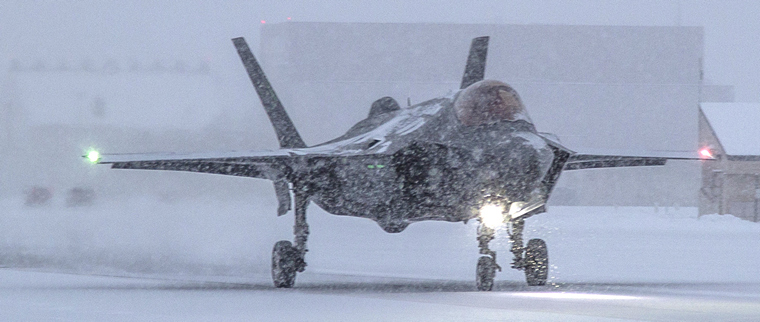 Photo © Lockheed Maj. Jonathan "Spades" Gilbert, U.S. Air Force F-35 test pilot, demonstrates the handling qualities of Lockheed Martin's (NYSE: LMT) F-35 Lightning II during icy runway ground testing at Eielson Air Force Base, Alaska. The testing is part of the certification process for the Norwegian drag chute and continues over the next several weeks. Maj. Eskil Amdal, test pilot with the Royal Norwegian Air Force, is also participating. This initial testing is the first of two phases to ensure the F-35A can operate in these extreme conditions. The second phase of testing will deploy the Norwegian drag chute during landing operations and is planned for first quarter 2018 at Eielson. About the Norwegian F-35 Drag Chute The F-35A drag chute is designed to be installed on all of Norway's F-35As and is form fitted to ensure it maintains stealth characteristics while flying. Norway and Lockheed Martin are working with the Netherlands who is sharing in the development of this critical capability. The drag chute underwent initial wet and dry runway deployment testing at Edwards Air Force Base, California earlier this year. 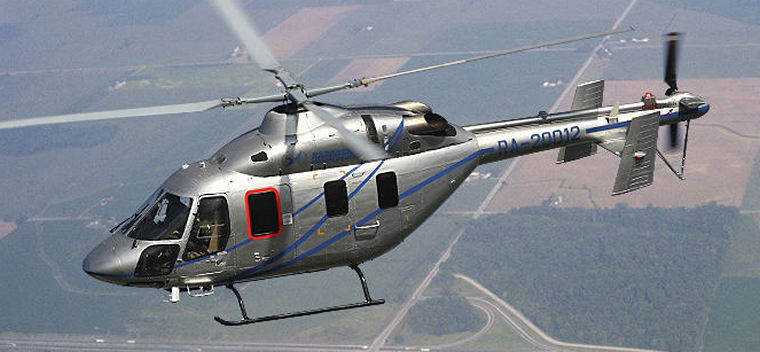 Photo © Russian Helicopters At the moment the helicopter has already started test flights. It is planned to expand Ansat's temperature regime to +50° Celsius. Thus, its temperature range will be from -45° to +50° Celsius. "Ansat is a very attractive helicopter due to its flight performance characteristics, including for customers from Asia and the Middle East. We have planned several upgrades of the machine, including the extension of the temperature range. I hope that positive test results will turn the interest of potential buyers into a number of agreements", said the company's Deputy CEO for marketing and business development Alexander Shcherbinin. It is planned to finish testing by mid-November. After this, a conference is scheduled in Islamabad for potential Pakistani customers to explore the helicopter's competitive advantages and specific features of operation. Ansat is a light multipurpose twin-engine helicopter serial production of which is deployed at the Kazan helicopter plant. In May 2015, the modification of the helicopter with a medical module was certified. It complies with all international standards for medical aviation and allows saving a patient's life during transporting to a hospital. According to the helicopter certificate, its design allows converting it into a cargo version or into a passenger rotorcraft that can lift up to seven people. The medevac Ansat has a number of competitive advantages over rivals in its class. First of all, it requires less operational, training and maintenance expenses. In addition, the helicopter has the biggest cockpit in its class and can maintain high speed, which allows using it for long-range trips. BOEING MISSILE DEFENCE TEAM LOADS MILESTONE MISSILE INTO SILO  Photo © Boeing Placing the interceptor in its silo meets a U.S. Department of Defence requirement of increasing the inventory to 44 by the end of this year. This interceptor includes features demonstrated in the successful intercontinental ballistic missile intercept test conducted in May. "The ballistic missile threat that our partners in the Missile Defence Agency are defending this country from requires always-ready capabilities," said Norm Tew, Boeing vice president and GMD program director. "As the system architect for nearly two decades, Boeing continues to deliver through our expertise in developing, testing and fielding progressively advanced solutions for this vital mission." The interceptor is designed to launch and destroy ballistic missile threats after receiving detection and tracking information from land-, sea- and space-based sensors. Boeing has been the system's prime contractor since 2001. The GMD system includes command-and-control facilities, communications terminals and a 20,000-mile fiber-optic communications network that interfaces with ballistic missile defence radars and other sensors.  USA, Nashville: An American Airlines Embraer ERJ-190 performing a flight from Austin,TX to Philadelphia,PA (USA), was en-route at FL370 about 80nm south southwest of Nashville,TN (USA) when the autopilot and the RNAV equipment failed rendering the aircraft unable to maintain reduced vertical separation minima (RVSM). The aircraft descended out of RVSM airspace to FL270, switched to conventional navigation using VOR to VOR navigation and continued to Philadelphia for a safe landing about 100 minutes later. USA, Phoenix: A woman is facing charges after she caused a disturbance on a flight at Sky Harbor Airport and entered the plane's cockpit. Rochelle Engram allegedly refused to sit down and was cursing at a flight attendant and other passengers. The flight attendant reported the situation to the captain who returned the plane to its gate. Four police officers were waiting there. As Engram was being removed from the flight, she rushed the reopen cockpit door and assaulted the flight attendant and attempted to get to the captain. Engram has been charged with aggravated assault, criminal trespassing, and resisting arrest. Italy, Roma-Fiumicino Airport: An Air Moldova Airbus A319 on a flight from Chisinau Airport, Moldavia, made a low fuel emergency landing at Rome's Fiumicino Airport, Italy. The aircraft, an Airbus A319, operated on a scheduled passenger flight from Chisinau, Moldavia. After a flight of just over two hours, the aircraft positioned for an approach to runway 16L. The approach was aborted at). The aircraft then positioned for a second approach, this time for runway 34L. This approach too was aborted. Subsequently, the flight crew decided to divert to Bologna and climbed to FL160. About 14:45 the flight elected to return to Rome, declaring a low fuel emergency. A third approach, to runway 16L again, was aborted at 14:59 hours. The flight then circled for a visual approach to runway 16R and a normal landing was carried out at 15:10 hours. The ANSV decided to launch an investigation into this serious incident on December 1, 2017. 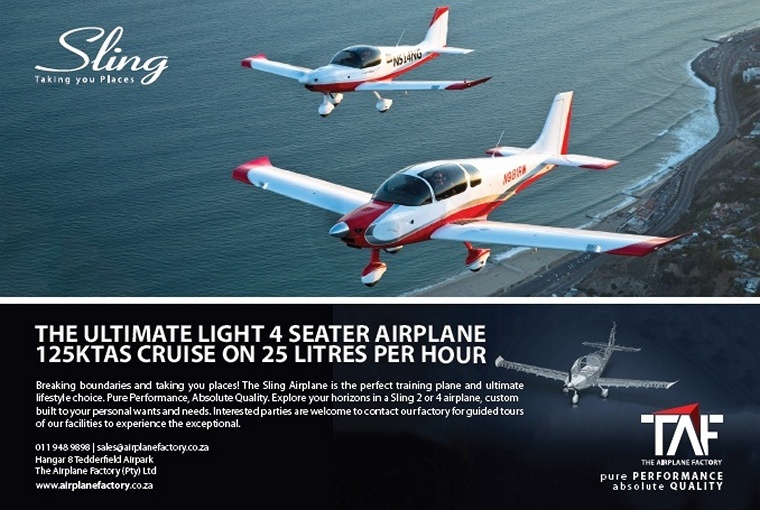  4 DECEMBER 1975 The A-7 Corsair II strike aircraft enters combat for the first time, operating from the aircraft carrier USS Ranger (CVA-61) over Vietnam To minimize costs, all proposals had to be based on existing designs. Vought, Douglas Aircraft, Grumman and North American Aviation responded. The Vought proposal was based on the successful Vought F-8 Crusader fighter, having a similar configuration, but shorter and more stubby, with a rounded nose. It was selected as the winner on 11 February 1964, and on 19 March the company received a contract for the initial batch of aircraft, designated A-7 The A-7 had a fast and smooth development. The YA-7A made its first flight on 27 September 1965, and began to enter Navy squadron service late in 1966. The first Navy A-7 squadrons reached operational status on 1 February 1967, and began combat operations over Vietnam in December of that year. 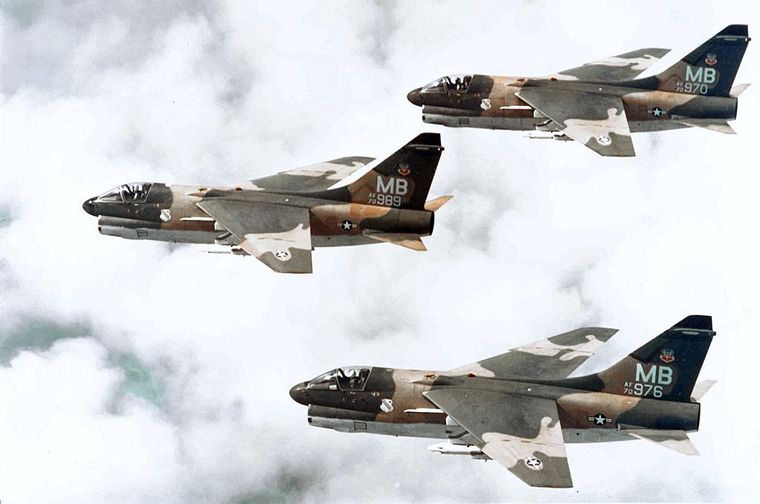 Photo USAF/commons.wikimedia.org Pilots of the early A-7s lauded the aircraft for general ease of flying (with the exceptions of poor stability on crosswind landings and miserable stopping performance on wet runways with an inoperative anti-skid braking system) and excellent forward visibility but noted a lack of engine thrust. This was addressed with A-7B and more thoroughly with A-7D/E. The turbofan engine provided a dramatic increase in fuel efficiency compared with earlier turbojets - the A-7D was said to have specific fuel consumption one sixth that of an F-100 Super Sabre at equivalent thrust. An A-7D carrying 12 x 500 lb (227 kg) bombs at 480 mph (775 km/h) at 33,000 ft (10,000 m) used only 3,350 lb (1,500 kg) of fuel per hour. In a sortie against the Thanh Hóa Bridge on 6 October 1972, four A-7Cs from VA-82 successfully delivered 8,000 lbs of high explosives with two aircraft carrying two 2,000 lb (910 kg) Walleyes, while two others also carried 2,000 lbs in Mk 84 GP bombs. In a simultaneous attack, the centre piling on the bridge's west side was hit and broke the span in half. After this, the Thanh Hoa bridge was considered permanently destroyed and removed from the target list. A total of 98 USN A-7 Corsairs were lost during the war. |
                  |
 |
 |

Copyright © Pilot's Post PTY Ltd
The information, views and opinions by the authors contributing to Pilot's Post are not necessarily those of the editor or other writers at Pilot's Post.